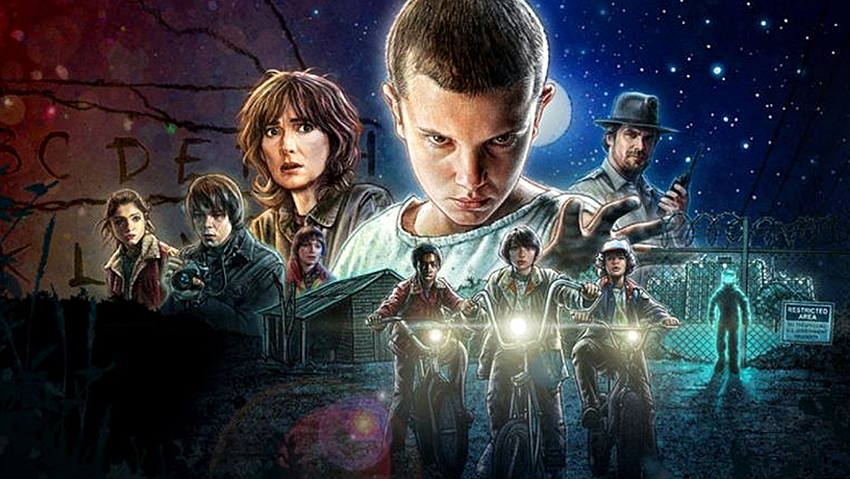The hit Netflix show “Stranger Things” has a root in theoretical physics, but UT scientists say it should not be mistaken as being scientifically accurate.
The series, created by the Duffer Brothers, tells the tale of a group of children who try to find their friend when he mysteriously disappears from their small town. Their search leads to the uncovering of many mysteries, and introduces science fiction concepts such as telekinesis, alternate dimensions and other-worldly monsters. The show was named the most popular digital original series in the U.S. during the week it was
released, and students at UT agree.
“I loved the show so much, I couldn’t stop watching,” said Sarah Seraj, an environmental engineering Ph.D. student.“I ended up going through the entire season in one night. It was well-paced, had great acting, and explained a lot of cool theoretical science, without becoming too over-the-top like some sci-fi shows can.”
However, how much of this science fiction tale is science and how much is fiction? Sivaramakrishnan Swaminathan, a Ph.D. student who works in field theory and particle physics, said the show’s
mysterious other world, The Upside Down, is far from current theoretical physics concepts. The show simultaneously refers to this place as an alternate dimension and a parallel universe — so which is it?
“To be honest, physicists never really use either of those terms the way they’re used in the show,” Swaminathan said. “What parallel universes usually mean to physicists can be explained using Schrödinger’s cat.”
‘Schrödinger’s cat’ refers to a paradox theory involving a cat shut in a box which may or may not contain poison. According to the theory, the cat can be thought of as both dead and alive while in the box. However, once the box is opened, both of those possibilities split into two parallel universes. If the cat is dead when the box is opened, a parallel universe is created where the cat is alive.
“However, on principle, these two universes can’t communicate with each other, which is where the show loses touch with this concept,” Swaminathan said.
Swaminathan said the idea of additional dimensions is more interesting.
“In the show, some characters have the ability to move in a completely different way than we can,” he said. “But it’s not a matter of moving to another dimension, but being able to move in another dimension.”
To explain The Upside Down, the show uses the analogy of an acrobat and a flea on a tightrope. Normal humans are like acrobats, limited to forward and backward motions, or along one dimension. However, a flea could move sideways or even under the rope, i.e. along multiple dimensions. Another issue, though, is the flea itself.
“Theoretically, if there were something that could move between the dimensions, that entity would be made up of very different particles, not normal matter like we’re constrained to on our side of the tightrope,” said Can Kilic, an assistant professor of theoretical particle physics at UT. “If there were such an entity, it would be particles, and not an actual solid object, let alone a living thing.”
In the show, a gate divides the world of the humans from the The Upside Down, a dark mirror image of the world.
“That part isn’t completely out of touch with theoretical physics, but even then, the things on the other side would be made up of different particles altogether,” Kilic said. “There’s no reason to believe that the other side would be a copy of our world here, or even be remotely similar.”
Although Kilic said the physics of the show does not match what scientists currently know, he acknowledged that humans are far from understanding everything about physics.
“Physics is an ever-evolving subject,” Kilic said. “However, if you restrict yourself to what we currently know, then the show isn’t plausible. It seemed like the show creators made a story out of a mixture of various physics ideas like parallel universes and extra dimensions, so there’s not one theory I could point to and say ‘Yes, the show resembles this framework,’ because there’s a lot of creative liberty being taken.”
Despite his scientific critiques of the show, Kilic said he still enjoyed watching it.
“I find it hard to put an overall ranking of how ‘realistic’ the show is, but I’d say it’s less realistic than ‘Back to the Future’ and ‘Sliders’,” he said. “There’s just many physics concepts being taken here. That doesn’t take anything away from the show though. I thought it was a great show with an enjoyable story with a great cast. In my personal ranking of science fiction shows, “Stranger Things” ranks pretty high.”















